IIVA Decorative is a beautiful plant, which is not only a garden decoration, but also performing many useful functions. In the spring, this shrub will delight you with its irresistible flowering, in summer - a green leaffall, and in the fall - a good high-limit harvest. You do not have to spend a lot of time to care for this plant, since it is unpretentious to no climatic conditions or to the soil. This is precisely due to its big popularity among dacities.
Content
- Botanical description of quince decorative with photo
- Varieties of Japanese quince that can be grown in the country
- Advantages of the decorative plant Quince Japanese and its useful properties
- Rules of landing and reproduction of quince decorative
- How to care for quince
- conclusions
- Video "Reproduction of Quince"
Botanical description of quince decorative with photo
IIVA decorative, IIVA Japanese (Henomeles) is the names of the same plant. His homeland is warm Japan, but it can grow in any country with a non-cool climate. However, it should be noted that the quince is winter-hardy enough and can tolerate very strong frosts if it is pre-prepared to prepare it. After all, Henomeles is a low-growing bush, which can be achieved only 1-3 m, and in the width of 5 m. Therefore, in the winter, its lowest branches concern snow, as a result of which it is frozen, and in the spring there are poorly blooming, and also fruit.
The branches and shoots of the Japanese quince are growing arc, they are completely covered with green leaves, which are very similar to the apple leaves, and the artificial plant resembles in color. Such an effect is achieved at the expense of the glossy glitter of leaves.
The width of the Henomelhes barrel is only 50 cm, but despite this, it is considered a strong plant, because it has a powerful and long rhizome, which perfectly breaks the soil and makes the quince-resist quince. However, if you want to transplant a mature tree to a new place, it is unlikely that you can succeed without damage to the plant whose root can be very damaging.
Flowering quince begins in May, and ends in early July. Large bright flowers, the diameter of which reaches 3-5 cm, grow very thick on the branch, forming brushes with 2-6 bipoon flowers, pollined by bees. Therefore, Quince is considered an excellent honey.
In July, the active fruction of shrub begins, at the end of September - in October, fruits ripen and acquire bright yellow color. They resemble the hybrid of apple and pears in shape, have a size -5 cm in diameter, and about 45 s. From above, each fruit is applied to a wax chain, which retains it from premature damage. Inside the fruits are its seeds resembling apples seeds. They can be dried within two years after collecting.
Lives Iiva Japanese 60-80 years old. Fruit starts 3-4 years after landing for 40 years in a row.
Varieties of Japanese quince that can be grown in the country
Shrub Decorative Quince Parties about 500 varieties - these are all hybrids of 4 main species of this plant:
- kathaanskaya's quince - reaches three meters high, has large barbed branches, blooms white and pink, the fruits in shape resemble an egg with a diameter of 4 cm;
- ivais low - such a name received, because its maximum growth is 1 m, blooms with large bright orange flowers;
- quince is beautiful - spiny shrub, with bright green leaves and bright red flowers;
- quince is a low shrub, which can simultaneously bloom white, pink, orange, red, there are even two-color flowers.
Advantages of the decorative plant Quince Japanese and its useful properties
Quince Japanese Oncecale was considered a decorative fruit culture. Another ancient Romans began to eat its fruits as the most delicious dessert. They sprinkled them with spices, walked with honey and wine, and treated them their most expensive guests. But the ancient Greeks preferred to enjoy the flowering and fruits of quince, and did not eat them. For them, Quince was the embodiment of beauty and fertility. In the Middle Ages, the fruits of Henomelles began to use as aphrodisiac and medicines from problems with the organs of the digestive system. To date, the meaning of this idle fruit is also difficult to overestimate. Of these, you can prepare a very tasty jam or cook compote, which will have a tonic, diuretic, binding, choleretic and antibacterial and anti-inflammatory effect on the human body. From the seeds of the quince, containing poison - amygdalin, you can prepare a healing decoction, which will help cure the joints and, if necessary, the nervous system will calm down.
Rules of landing and reproduction of quince decorative
Before starting the landing of Quince decorative, it is necessary to choose the best land plot for it, which will be beneficial to influence its growth and development. What you need to take into account when selecting a place to grow quince:
- Despite the fact that Quince is unpretentious to the chemical composition of the soil plant, it is still necessary to take into account this issue. The land that you choose to land the quince should be most fertile. It is better if the character of its soil is a loamy, sampling or turf-podzolic, but in no case neither peat and neither alkaline, since such soil can only harm the health of the plant.
- The plot should be well lit by the sun, as Quince loves heat very much, and therefore it grows better in direct getting on her sunlight. At the same time, it is desirable that the place where the landing of quince will be placed as much as possible from the wind and the likely strong frosts.
- Next to quince should not be low trees, but also it is also impossible to allow Henomeles to be under shadow. Together with quince on the site, you can plant an apple tree and a pear that beneficially will affect Henomelles.
Once you decide on the quince site, you will need to go to the next step - carefully prepare the soil for disembarking in the fall:
- Clear it from weeds.
- Raise and fade in sand, leaves, humus and potash fertilizers.
When spring comes, then you can plant a seedling of quince to the ground. A plant is better attached if the seedling will reach the seedling at the time of the landing and will transfer from the pot with a closed root.
To plant a seedling, you need to dig a hole with a diameter and a half-meter depth, pour it out with two buckets of humus, add 300 g of superphosphate, a little potash nitrate and ash. It is important to fall asleep the earth rhizome quince so that no part of it remains bare over the soil, otherwise Quince will not be bad for what it is in principle adapted.
Where to take a seedling of henomeles
The best and easiest way to get a seedling of Japanese quince is to grow it alone from the seed. It is necessary to do it under winter, in the fall. Drain seeds need just as any seedlings. For three months at air temperature not lower than 3 oFrom seeds should appear. When the first quince sprouts appear. They need to be transferred to the ground where they will need to grow to seedlings. It will take 2-3 years.
Japanese quenching breeding methods
There are three main methods by which the henomelaes reproduction occurs. We mentioned above - this is a reproduction of seeds. Here we will dwell on the other two:
- Quitting Iziva with cuttings: late in the fall, when they usually ripen shoots, they need to trim and leave stored in the cool, but with a dry place before the spring. And in April - early May, as soon as he warmer, the cuttings need to fall into the ground.
- Retalization of quince by dividing the bush: to make this procedure is recommended either in the end of spring or at the end of autumn. The landing of seedlings should be carried out so that the distance between them remains at least half a meter.
How to care for quince
It is very easy to care for Henomelles, because this plant does not require anything special. To grow and develop, it is enough to make some simple things:
- Sometimes watered it.
- Periodically fertilize the soil in which Quince grows.
- Every year in the spring, cut it with both horizontally growing branches, and vertically growing and forming a crown. Old dried branches that are no longer fruit, you need to cut.
- For the winter, the plant is better to cover the sweetheart.
- To ensure that the quince does not spoil pests, first of all, the failure. It must be struggling with the help of lime and special sprayers for fruit trees.

conclusions
IIVA Japanese is a decorative-fruit shrub, which blooms beautifully, brings a good harvest and does not require troublesome care. Henomelles fruits are very useful and valuable for human health. They found wide use in cooking and medicine.
Video "Reproduction of Quince"
In this video, the Garden Center Specialist "Greensad" tells about all the ways of reproduction of Quince Japanese, clearly demonstrating how to do it correctly.

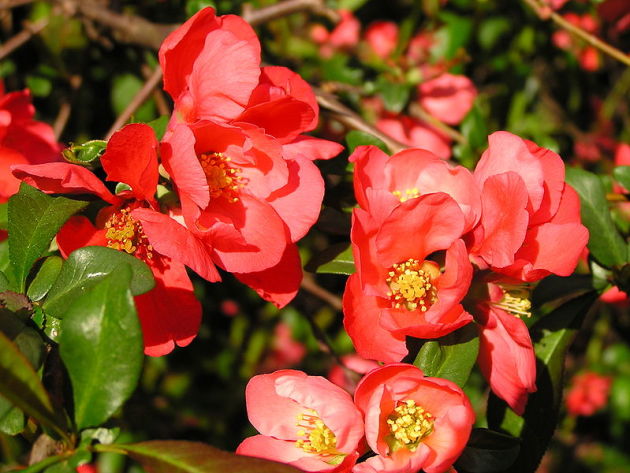
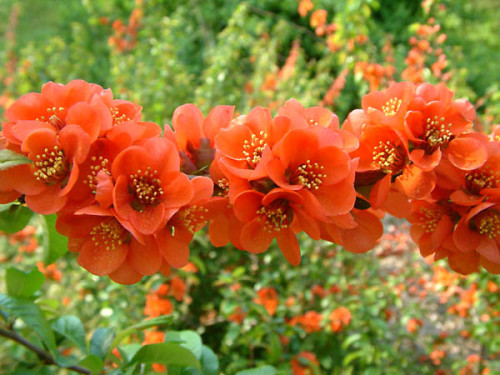
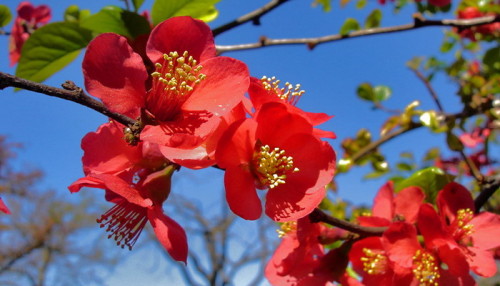
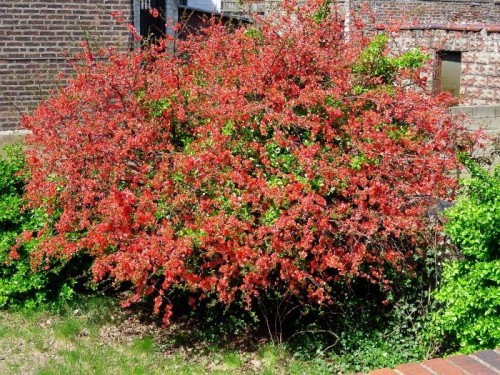
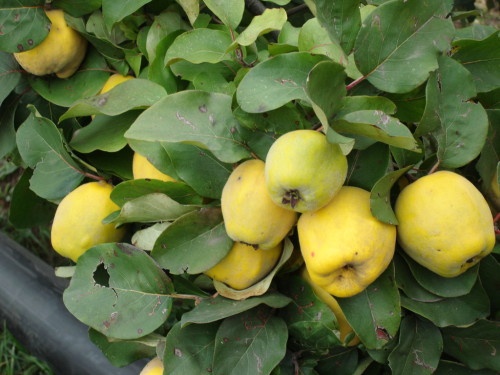
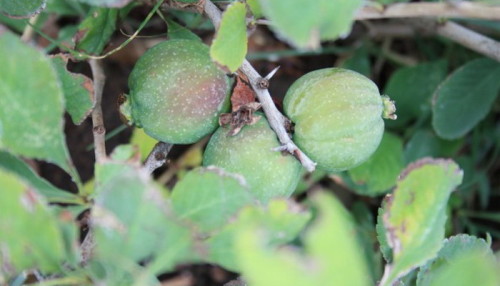
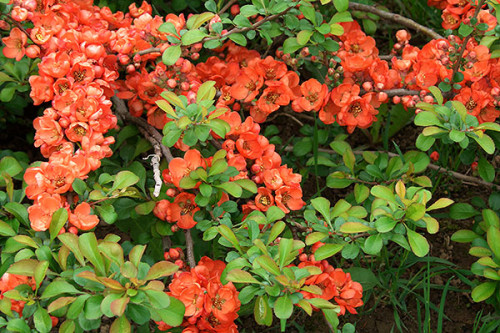

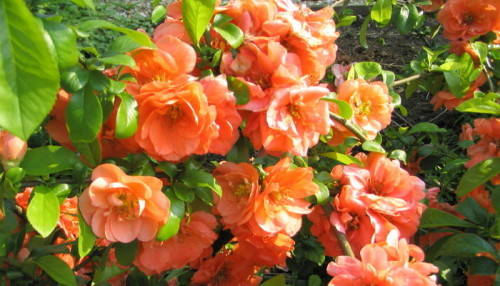
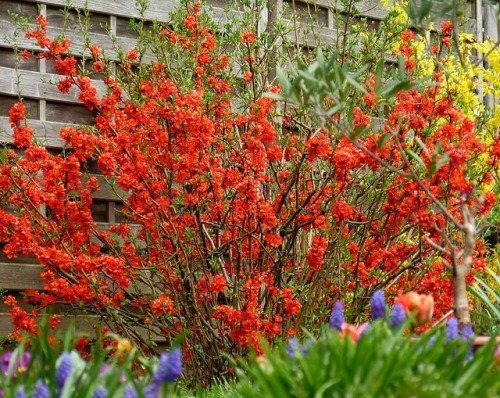
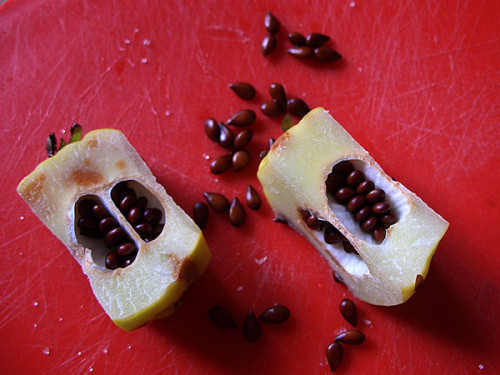
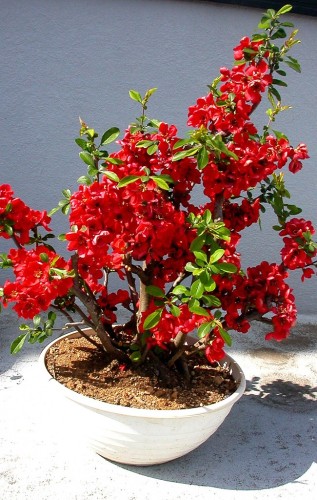












 Start a discussion ...
Start a discussion ...